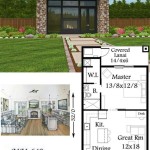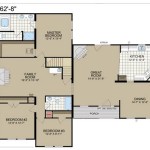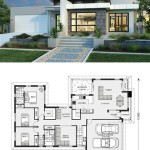Floor Plans For Container Homes: A Guide to Designing Your Dream Space
Container homes, constructed using repurposed shipping containers, have gained significant popularity in recent years due to their affordability, sustainability, and unique architectural potential. As with any home design project, a well-thought-out floor plan is essential for maximizing space, functionality, and aesthetics. This article explores the intricacies of floor plans for container homes, offering insights into various design strategies, considerations, and popular layouts.
Understanding the Constraints and Opportunities
The rectangular shape and standardized dimensions of shipping containers present both challenges and advantages for floor plan design. It's crucial to understand these constraints and leverage the unique opportunities they offer. The limited width of a standard container (typically 8 feet) necessitates a thoughtful approach to furniture placement and traffic flow. However, the container's height (typically 8.5 or 9.5 feet) provides ample vertical space that can be creatively utilized for lofts, mezzanines, or storage solutions.
The modular nature of shipping containers allows for flexible configurations. Multiple containers can be stacked vertically or horizontally to create larger living spaces. This flexibility enables customization to suit individual needs and preferences. Moreover, the robust construction of containers provides excellent structural integrity, making them ideal for various climate conditions and seismic zones.
Common Container Home Floor Plan Designs
Several popular floor plan configurations are commonly employed for container homes, each offering a different approach to space optimization and living experience.
1. Single Container Layout
The simplest and most cost-effective configuration involves using a single container as the primary living space. This approach is suitable for smaller homes or studios, with the floor plan typically incorporating a living area, kitchen, bathroom, and sleeping space. The lack of internal walls allows for an open and airy feel, while the compact nature encourages efficient resource utilization.
2. Double Container Layout
Using two containers side by side creates a more spacious layout, typically allowing for a separation between living and sleeping areas. The two containers can be connected by a shared corridor, creating a distinct hallway. Variations on this design often include an additional container stacked above the main two, creating a multi-level home with a loft for sleeping or additional living space.
3. Multi-Container Layout
Large-scale container home projects often involve multiple containers arranged in various configurations to create expansive and complex floor plans. These designs can accommodate larger families or incorporate specialized spaces like home offices, entertainment rooms, or guest suites. The modularity of the containers allows for a diverse range of possibilities, enabling highly personalized and unique floor plan layouts.
Key Considerations for Container Home Floor Plans
Designing a floor plan for a container home requires careful consideration of several key factors that will impact the functionality and livability of the space.
1. Orientation
The orientation of the container(s) relative to sunlight and views is crucial. Placing large windows on the south side of the container can maximize natural light and passive solar heating. Conversely, placing windows on the north side can minimize heat gain during warmer months. Proper orientation is vital for creating a comfortable and energy-efficient living environment."
2. Ventilation
Effective ventilation is essential for container homes due to their enclosed nature. Adequate air circulation helps prevent moisture buildup, maintain a comfortable temperature, and promote air quality. This is particularly important in humid climates. Floor plans should include strategically placed windows, doors, and vents to ensure proper air flow.
3. Insulation
Shipping containers are typically not insulated, so adding insulation is crucial for regulating temperature, reducing noise, and improving energy efficiency. Floor plan designs should incorporate space for insulation materials between the container walls and the interior finishings.
4. Plumbing and Electrical
Integrating plumbing and electrical systems requires careful planning and placement. Floor plans should clearly indicate the locations of fixtures, outlets, and wiring pathways, ensuring accessibility and functionality. It's crucial to consider local building codes and regulations when designing the layout of these systems.
The design and implementation of a floor plan for a container home presents a unique set of opportunities and challenges. By understanding the constraints and advantages of using shipping containers, exploring common floor plan configurations, and carefully considering key factors such as orientation, ventilation, insulation, and utilities, homeowners can create a functional, aesthetically pleasing, and sustainable living space.

Container Home Floor Plans Types Examples Considerations Cedreo

9 Container Home Floor Plans That Maximize Space House

Container Home Plans Blueprints Housing

8x20 Container Floor Plans House Building A Home

Container Home Floor Plans Structures Layouts More Ideas

Container Home Plans Blueprints Housing

Intermodal Container Home Floor Plans Below Are Example One Two Three Bedroom Residential Primer Rscp

Affordable Housing Container Home Plans

Container Home Floor Plans Cmg Conteiner

Efficient Container Floor Plan Ideas Inspired By Real Homes House Plans Design








